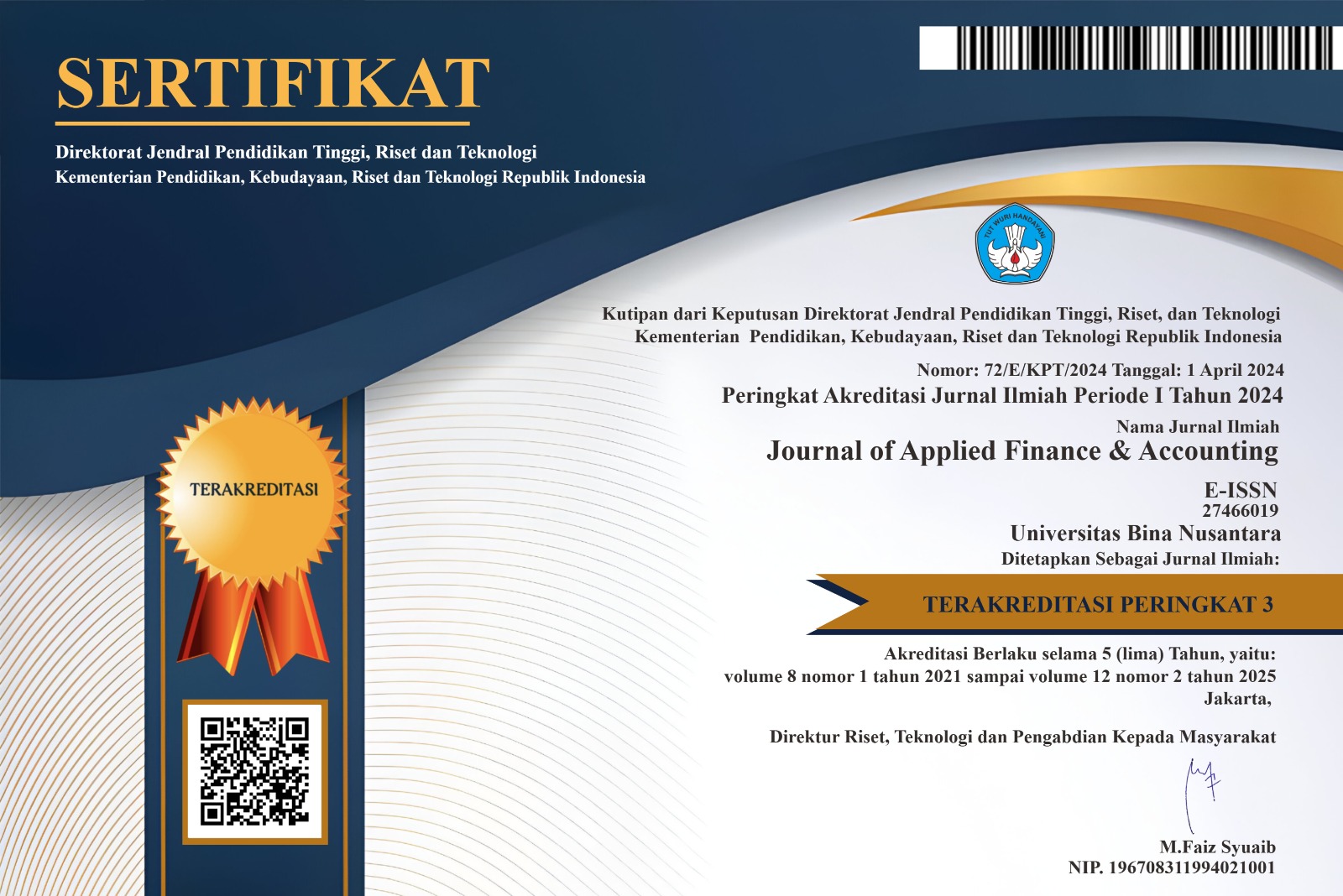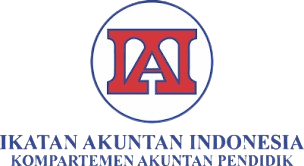ANALYSIS OF ACCOUNTING INFORMATION SYSTEMS SALES AND CASH RECEIPTS TO IMPROVE INTERNAL CONTROL
DOI:
https://doi.org/10.21512/jafa.v8i2.8130Keywords:
Accounting Information System, Cash Receipts, Cash Sales, Internal ControlAbstract
Sales accounting information system and cash receipts is one of the sub-systems in accounting information that describes the correct procedures for sales and cash receipts activities. The problem in this study is how to implement a sales information system and cash receipts at PT Sumber Alfaria Trijaya. The type of research used by researchers in the preparation of this study is a qualitative method. The data used in this study is primary data. Data collection procedures are observation, documentation and direct interviews to the object of research. The conclusion of this study is the application of accounting information systems in cash sales and cash receipts at PT Sumber Alfaria Trijaya is still not good, seen from the dual function, namely the delivery function which doubles as a warehouse function and the lack of data and completeness. The analysis of the accounting information system for cash sales and cash receipts on internal control at PT Sumber Alfaria Trijaya is still not good and weak because there are several problems including the existence of multiple functions by the Assistant Head of the store, cash is not directly deposited to the Bank. In the cash function bill, and the amount of cash receipts from cash sales deposited in the bank on the third day not on the day of the transaction. Then there is also no periodic or sudden checking of cash balances by internal control.
References
Agoes, Sukrisno. (2016). AUDITING Practical Guidelines for Examination of Accountants by Public Accounting Firms. Edition 4. Jakarta: Salemba Empat.
Anggraeni, E. Y. & Irviani, R., (2017). Introduction to Information Systems. 1 editor. Yogyakarta: Andi.
Azhar Susanto, (2013), Accounting Information Systems, -Structure-Risk-Control-Development, Prime Edition, Lingga Jaya, Bandung.
Azhar Susanto, (2013), Accounting Information Systems, -Structure-Control-Risk-Development, Prime Edition, Lingga Jaya, Bandung
Azhar Susanto., (2017), Accounting Information Systems – Integrated Concept Understanding, Prime Edition, First Printing, Bandung: Lingga Jaya.
Badriyah, M. (2015). Human Resource Management, Printing 1. Bandung: CV Pustaka Setia.
Bahri, Syaiful. (2016). Introduction to Accounting. First Printing. Yogyakarta: CV. Andi Offset.
Bodnar, George H., and William S. Hopwood. (2010). Accounting Information System. Yogyakarta: ANDI.
Gesah, R., & Prabowo, M. (2015). University of Tulungagung Faculty of Economics 2015.
Harahap, Sofyan S. Wiroso and Muhammad Yusuf (2010) Accounting for Islamic Banking. Jakarta: LPFE- Usakti
Kuswara, H., & Kusmana, D. (2017). Web-Based Student Attendance Information System With SMS Gateway at Al – Munir Vocational High School Bekasi. Indonesian Journal on Networking and Security, 6(2), 17–22
Mulyadi. (2017). Accounting System. Fourth Edition. Jakarta: Salemba Empat.
Romney, M. B. and P. J. S. (2014). Accounting Information Systems. Salemba Four
Sugiyono. (2013). Business Research: Quantitative, Qualitative, and R&D Approaches. Alphabet.
Trimahardhika, R., & Sutinah, E. (2017). Development in Library Information System Design. Journal of Informatics, Vol.4 No.2(2), 250.
Valery G Kumaat, (2011), Internal Audit. Jakarta: Erlangga Publisher
Wijayanto in Mardi, (2014), “Accounting Information Systemsâ€, Second Printing, Ghalia Indonesia, Bogor.
Downloads
Published
Issue
Section
License
Authors who publish with this journal agree to the following terms:
Authors retain copyright and grant the journal right of first publication with the work simultaneously licensed under a Creative Commons Attribution License that allows others to share the work with an acknowledgement of the work's authorship and initial publication in this journal.
Authors are able to enter into separate, additional contractual arrangements for the non-exclusive distribution of the journal's published version of the work (e.g., post it to an institutional repository or publish it in a book), with an acknowledgement of its initial publication in this journal.
Authors are permitted and encouraged to post their work online (e.g., in institutional repositories or on their website) prior to and during the submission process, as it can lead to productive exchanges, as well as earlier and greater citation of published work (See The Effect of Open Access).





